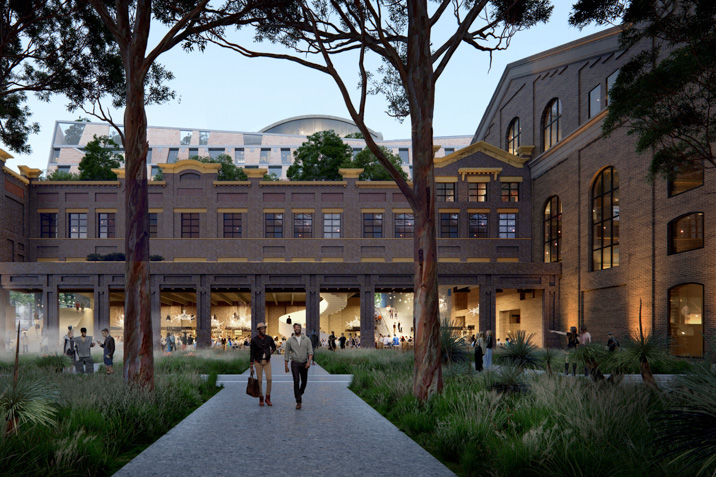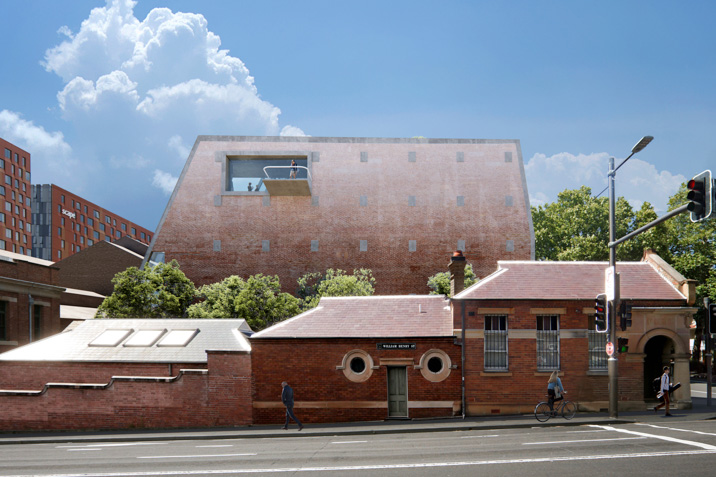A decision regarding the future of Powerhouse Ultimo is drawing closer, with Infrastructure NSW putting plans on show designed by the likes of Architectus, Durbach Block Jaggers, and Tyrell Studio to the public.
The new concept is a revision of the submission made by the consortium when they were announced as the winners of a design competition, which would see the revitalisation of the Ultimo institution. The consortium comprises Architectus, Durbach Block Jaggers Architects, Tyrrell Studio, Openwork, Youssofzay + Hart, Akira Isogawa, Yerrabingin, Finding Infinity and Arup.
It hasn’t always been smooth sailing for the proposed transformation. A change in government saw plans put on ice, before Premier Chris Minns announced that the museum would indeed be renovated, but in a more cost-effective manner. The shutdown of the facility led to outcry from the Public Service Association (PSA), who at the time were concerned about the future of staff and the museum itself.

Fast forward to today and these concerns have been allayed. A new library, learning centre and courtyard will be integrated into the existing site, while many of the internal spaces will be stripped back, while ramps, stairs and mezzanines will be removed. Visitors will enter the museum via the Goods Line, recalibrating the entrance.
There has been a concerted effort made to expose the structural elements and earthy palette of the structure, reflecting the building’s former history as a power station and Turbine Hall, while enhancing connection to Country. Brick from the existing building and surrounding demolitions will be reutilised, with glass and marble also featuring within the palette.
Durbach Block Jaggers Owner Camilla Block told Architecture & Design at the time of the design competition announcement that she and her practice were delighted to be involved in the transformation of a much-loved city institution.

“At DBJ, we’ve been working together for 30 years and this is our first museum project, which I feel so, so excited about. It’s a game changer for us,” she says.
“I think there's a level at which you can be in love with a building when it's in your own city. This is next level. I’ve gone from having small kids and them tearing around in there to doing competitions and a fit out of an exhibition. I feel like the building’s in my bones, and that long knowledge you only get when a building is in your own city.”
If approved, $250 million will be provided by the state government plus $50 million via philanthropic contributions to bring the project to life. Approximately $34 million will be injected into the local economy if the project goes ahead, while 200 direct and 140 indirect jobs will be created.

